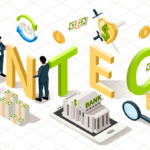October was an exhilarating month for OpenAI. From raising billions to announcing the news about building chips, OpenAI is taking the AI industry forward. If you’re curiously following the journey of this giant AI startup, this article has nine updates for you from October. Let’s get into the OpenAI updates.
October 30, 2024: Search through your ChatGPT history
On October 30, OpenAI introduced a new feature that allows users to search through their ChatGPT history. Announced via an X post, this update enables users to quickly search through past conversations, responses, or insights from their interactions with ChatGPT. By making it easier to revisit previous chats, the feature helps reduce repetitive queries and improves overall productivity. It also enhances organizational capabilities within ChatGPT, allowing users to manage prompts and answers more efficiently. Overall, this update aims to streamline users’ experience and make ChatGPT a more practical tool for ongoing tasks.
October 29, 2024: OpenAI is reportedly planning to build its first AI chip
OpenAI is reportedly planning to develop its own AI chip to change the game in AI development. This ambitious decision will decrease reliance on external providers like Nvidia, whose products are costly and also bypass the supply chain issues. The new chip would allow OpenAI to develop hardware specifically to its models, and in turn will enhance both efficiency and speed. This approach marks a step toward full-stack AI, with OpenAI potentially becoming more vertically integrated. The chips are expected to become operational by 2026, promising long-term cost savings and control.
OpenAI is reportedly planning to develop its own AI chips in collaboration with Broadcom and TSMC (Taiwan Semiconductor Manufacturing Company), a move that would reduce its reliance on external suppliers like Nvidia, whose AI chips are both expensive and subject to supply chain constraints. By designing custom hardware, OpenAI would be able to optimize the chips specifically for its AI models (such as GPT and other large language models) leading to improvements in efficiency and performance. The AI chips are expected to be operational by 2026, offering long-term cost savings and giving OpenAI greater control over its AI development. This strategic shift marks a key step toward deeper vertical integration for the company.
October 25, 2024: OpenAI says it won’t release a model called Orion this year
A report by The Verge on 24th October says that OpenAI was going to release the next flagship product code-named ‘Orion’ on the second birth anniversary of ChatGPT. But TechCrunch report says that OpenAI confirmed it would not release the anticipated ‘Orion’ model this year.
On October 25, OpenAI confirmed that it would not be releasing its anticipated new AI model, code-named Orion, in 2024. Initial reports from The Verge and TechCrunch had speculated that Orion—a next-generation version of ChatGPT—might launch on November 30, 2024, the second anniversary of ChatGPT’s initial release. However, reports from TechCrunch clarified that OpenAI postponed the debut of the Orion model clarified that the release has been postponed. While the reasons for the delay remain unclear, the decision suggests that OpenAI is taking additional time to refine the model before its public debut.
October 23, 2024: ChatGPT rolls out with Apple Intelligence in iOS 18.1 update
With Apple’s iOS 18.1 update, ChatGPT received a boost through enhanced integration with Apple Intelligence. This collaboration brings ChatGPT’s capabilities closer to iPhone users, combining Apple’s hardware and software capabilities with AI. Users can now access ChatGPT seamlessly across their Apple devices, leveraging Apple Intelligence for tasks like voice-activated inquiries and data privacy features. The integration aligns with Apple’s focus on AI and OpenAI’s goal to broaden its user base via convenient, device-native solutions.
October 17, 2024: ChatGPT comes to Windows
In a major expansion, OpenAI introduced ChatGPT for Windows, making the tool directly accessible to millions of PC users. This integration allows Windows users to use ChatGPT without a web browser, streamlining access to AI-powered assistance across applications like Word and Excel. It underscores OpenAI’s commitment to versatility and user convenience. The rollout includes features like a widget for easy interaction, marking a step toward embedding AI assistance within everyday computer operations for work and personal use.
October 8, 2024: OpenAI inks new content deal with Hearst
OpenAI partnered with media giant Hearst in an arrangement set to enrich ChatGPT’s informational base. The collaboration involves access to Hearst’s vast content library, which may lead to enhanced training for ChatGPT, particularly in specialized fields. This partnership reflects OpenAI’s strategy to improve response accuracy and quality. The alliance with Hearst also supports a trend of AI companies collaborating with media for high-quality content sources, ultimately improving AI-driven insights and customer engagement.
October 3, 2024: OpenAI introduced an early version of Canvas—a new way to work with ChatGPT on writing & coding projects
OpenAI introduced “Canvas,” an innovative workspace designed to help users work on coding and writing projects. Canvas offers specialized features such as syntax highlighting, real-time feedback, and collaborative options, tailored for developers and writers seeking interactive support. This tool allows users to interact with ChatGPT in a more structured environment, streamlining project management and making iterative work easier. Canvas is OpenAI’s latest move to cater to creative professionals and technical users with more efficient AI-powered workflows.
October 2, 2024: OpenAI raises $6.6B and is now valued at US$157B
OpenAI raised an impressive US$6.6 billion, setting a new record for venture funding. Led by Thrive Capital, the round also included major investors like SoftBank, boosting OpenAI’s valuation to US$157 billion. This funding is set to enhance R&D, expand computing resources, and fuel advancements in AI safety and performance. The massive investment highlights industry confidence in OpenAI’s vision and cements its position as a leading force in the AI sector, promising significant innovation ahead.
October 1, 2024: Dev Day brings Realtime API to AI app developers
OpenAI hosted Dev Day and kicked off October by introducing a real-time API that developers can use to integrate ChatGPT capabilities directly into their applications. The real-time API simplifies embedding AI in various software solutions, enhancing interactivity and responsiveness. This feature empowers developers to create dynamic, AI-driven applications across industries, from customer service to education. OpenAI’s focus on developer tools aligns with its mission to drive innovation and adoption of AI within business applications.
Conclusion
As OpenAI continues to make strides in AI development and integration, October’s milestones highlight its commitment to expanding capabilities, enhancing accessibility, and pursuing technological self-sufficiency. With billions in new funding, significant partnerships, and enhanced user accessibility, OpenAI is solidifying its position in AI’s future. Looking forward, OpenAI’s growth trajectory hints at increasing influence in 2025, especially with ongoing advancements in infrastructure and real-world AI applications.









